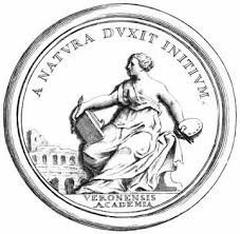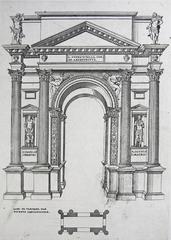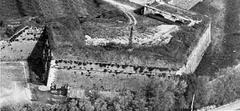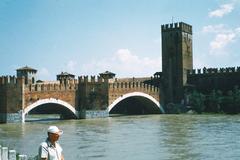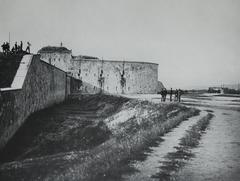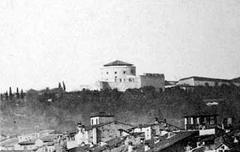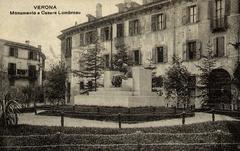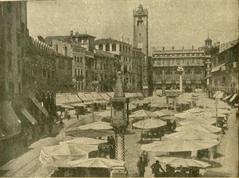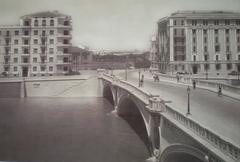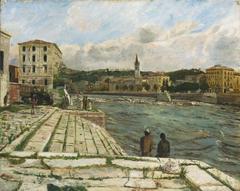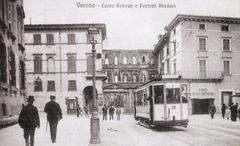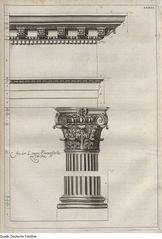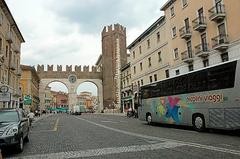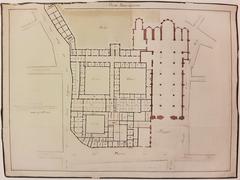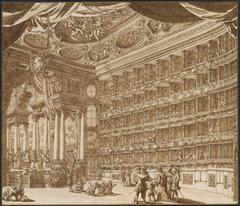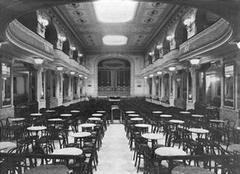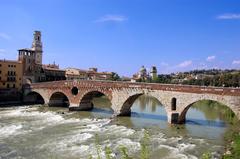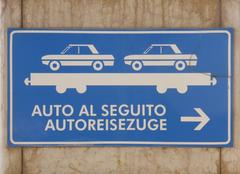Radio Museum of Verona: Visiting Hours, Tickets, and Historical Site Guide
Date: 14/06/2025
Introduction
In the heart of Verona, Italy, the Radio Museum of Verona—officially the Museo della Radio Guglielmo Marconi—provides a captivating exploration of the evolution of radio technology. Founded from the private collection of radio enthusiast Alberto Chiantera, the museum traces the fascinating journey from the earliest telegraph devices to sophisticated broadcasting equipment, highlighting the pivotal role Italy has played in the development of global communication. With over 700 artifacts, including rare military radios and interactive exhibits, the museum is a cultural landmark, celebrating the legacy of Nobel laureate Guglielmo Marconi and offering visitors a unique perspective on the technological advancements that have shaped modern society. Its proximity to iconic sites like the Verona Arena and Tomba di Giulietta makes it a must-visit destination for technology lovers and cultural explorers alike (Città di Verona; Visit Verona; Italia.it).
Table of Contents
- Introduction
- Origins and Foundation
- Exploring the Collection
- Guglielmo Marconi: The Museum’s Namesake
- Visiting Hours and Ticket Information
- Accessibility and Visitor Tips
- Nearby Attractions and Travel
- Visual and Interactive Experiences
- Special Events, Guided Tours, and Workshops
- Frequently Asked Questions (FAQ)
- Conclusion and Recommendations
- Sources and Official Links
1. Origins and Foundation
The Radio Museum of Verona originated from Alberto Chiantera’s extensive private collection. With a vision to preserve the legacy of radio communication, Chiantera assembled artifacts that document radio’s transformation from the late 19th-century telegraphy era to the innovative devices of the late 20th century (Città di Verona; Verona.net). Since its official opening in May 2001 at the Istituto Tecnico Galileo Ferraris, the museum has connected educational initiatives with historical preservation, enriching Verona’s technological heritage.
2. Exploring the Collection
Early Radio Receivers and Transmitters
The museum features a remarkable array of early telegraph devices, radiotelegraph transmitters, and the historically significant Ruhmkorff coil. These artifacts illustrate the foundations of wireless communication and are complemented by detailed descriptions and contextual information.
Military and Broadcasting Equipment
Highlighting the strategic role of radio, the collection includes military radios from World War II and post-war models. These exhibits underscore radio’s significance in intelligence and its transition into civilian life, including compact receivers and early car radios (Verona.net).
Iconic Radios and Design Innovations
Visitors can admire radios that reflect stylistic and technological trends from the 1930s to the 1980s, including Art Deco and Bauhaus-inspired models, iconic transistor radios, and design pieces from the era of miniaturization. Each piece narrates a story of innovation and cultural change (Evendo).
Scientific Instruments and Interactive Exhibits
The museum’s educational mission is evident in its display of laboratory equipment—signal generators, oscilloscopes, and measuring devices. Interactive stations allow visitors to experience tuning vintage radios and listening to historical broadcasts (Radiomuseum.org).
3. Guglielmo Marconi: The Museum’s Namesake
Named in honor of Guglielmo Marconi, the Nobel laureate and pioneer of wireless telegraphy, the museum celebrates his revolutionary contributions to radio technology. Among its most notable exhibits is the directional antenna from Marconi’s yacht, Elettra—a historical artifact associated with some of the earliest wireless transmissions, linking directly to modern wireless communication advancements (Visit Verona).
4. Visiting Hours and Ticket Information
- Standard Opening Hours: Tuesday to Sunday, 10:00 AM – 6:00 PM; closed Mondays.
- Ticket Prices: Adults €6–€8; reduced €4–€6 for students and seniors; children under 12 enter free.
- Guided Tours: Available on weekends and by reservation; recommended for enhanced context.
Note: As of June 2025, the museum is temporarily closed for renovations and collection updates. Reopening dates and ticketing details will be announced on official channels. Always verify current status before planning your visit (WhichMuseum).
5. Accessibility and Visitor Tips
- Wheelchair Access: The museum is equipped for visitors with mobility needs; contact staff in advance for specific accommodations.
- Audio Guides: Available in multiple languages for a comprehensive experience.
- Visitor Recommendations: Wear comfortable shoes, allocate 1–2 hours for your visit, and consider guided tours for deeper engagement.
- Photography: Allowed without flash; please confirm on arrival for specific restrictions.
6. Nearby Attractions and Travel
The museum’s central location allows easy integration into a broader Verona itinerary:
- Historical Sites: Tomba di Giulietta, Museo degli Affreschi G.B. Cavalcaselle, Arena di Verona, Castelvecchio.
- Transport: Walking distance from Verona Porta Nuova railway station; accessible by ATV public buses, taxis, or the Verona Bike sharing system (Journey of Exploration).
7. Visual and Interactive Experiences
The Radio Museum of Verona offers engaging multimedia displays, interactive listening stations, and detailed photographic documentation. For those unable to visit in person, virtual tours and online galleries are accessible via the museum’s official website.
8. Special Events, Guided Tours, and Workshops
- Guided Tours: Led by experts, available in multiple languages.
- Workshops: Periodically offered for students and families, focusing on radio science and history.
- Events: The museum occasionally hosts themed exhibitions and educational lectures; check the official calendar for updates.
9. Frequently Asked Questions (FAQ)
Q: Is the museum currently open?
A: As of June 2025, the museum is temporarily closed for renovations. Check official sources for reopening updates.
Q: How much do tickets cost?
A: Historically, tickets ranged from €6–€8 for adults and €4–€6 for concessions. Children under 12 enter free.
Q: Is the museum accessible for visitors with disabilities?
A: Yes, with some limitations due to the historic building. Contact staff for details.
Q: Are guided tours available?
A: Yes, by reservation and on weekends.
Q: Is the Radio Museum included in the Verona Card?
A: Inclusion may vary; confirm with official Verona Card resources.
10. Conclusion and Recommendations
The Radio Museum of Verona stands as a bridge between science, technology, and cultural memory. Its extensive collection—from Marconi’s pioneering equipment to mid-century design masterpieces—offers a compelling narrative of Italy’s and the world’s communication history. While temporarily closed for updates, the museum remains an essential stop for future Verona visitors. To maximize your experience:
- Check the museum’s status in advance and consider combining your visit with nearby historical attractions.
- Download the Audiala app for guided audio tours and real-time updates.
- Use the resources of Verona’s tourist offices for the latest information.
Experience Verona’s innovative spirit by exploring this extraordinary collection when it reopens, and enrich your trip with the city’s remarkable blend of history, art, and technology (WhichMuseum; Visit Verona; Italia.it).
11. Sources and Official Links
- Visiting the Radio Museum of Verona: Hours, Tickets, and Historical Insights, 2025, Città di Verona (https://www.cittadiverona.it/guide/musei/museo-della-radio-itis-g-ferraris/)
- Radio Museum of Verona: Visiting Hours, Tickets, and Exploring Verona’s Unique Technological Heritage, 2025, Visit Verona (https://www.visitverona.it/en/explore/a-treasure-trove-of-history-art-and-culture)
- Exploring the Radio Museum of Verona: Visiting Hours, Tickets, and Highlights of the Historic Collection, 2025, Italia.it (https://www.italia.it/en/veneto/verona/cultural-places/radio-museum)
- Radio Museum Verona Visiting Hours, Tickets & Visitor Guide to Verona’s Historical Sites, 2025, WhichMuseum (https://whichmuseum.com/museum/museo-della-radio-verona-39136)
- Verona Travel Guide, Journey of Exploration (https://www.journeyofexploration.com/verona-travel-guide/)
- Not About the Miles, One Day in Verona Itinerary (https://notaboutthemiles.com/one-day-in-verona-itinerary/)
- Radiomuseum.org (https://www.radiomuseum.org/museum/i/museo-della-radio-d-epoca-verona/)
- Evendo (https://evendo.com/locations/italy/verona/attraction/museo-della-radio)
